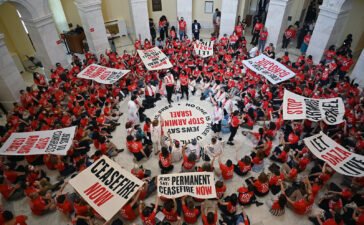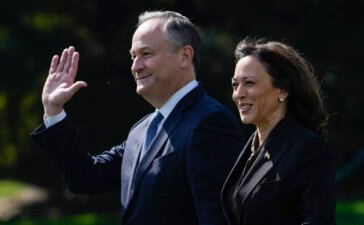This article was written by Jerry L. Wallace and is published with his permission.
At around noontime, on Thursday, March 20, 1924, Ron Hubbard met in the West Wing of the White House the 30th President of the United States, Calvin Coolidge. Many young boys of the 1920s, seeing photos of the President greeting youngsters in the photogravure section of their newspapers, dreamed of doing the same. For Hubbard, that dream became a reality, and for him, remained a pleasant childhood memory.
At the time, young Hubbard, who lived with his parents in Washington, D.C., had just celebrated his 13th birthday on March 13. He was a member of the Boy Scouts of America, Troop 10, a top-ranked group. The troop met at the Ninth Street Christian Church, located in the city’s Northeast section.
Hubbard not only liked Scouting, but, at this time, it was the central focus of his life. And, with the encouragement and help of his Scoutmaster, he worked diligently at advancing in the organization’s program. On February 26, 1924, at a Court of Honor, he was recognized as both a Life and Star Scout, no small achievement.
Then, in early March, while still 12 years old, he completed the requirements for Eagle Scout, the highest rank in Scouting. He was told, likely by his Scoutmaster, that he was the youngest Eagle Scout in the United States. The formal public recognition of his achievement took place at a Court of Honor on March 25, 1924, and soon thereafter he received confirming documentation from the Scout’s national headquarters in New York.
How did this White House meeting come about? William Lewis Butcher, a highly regarded New York social worker, believed that “boys are the country’s biggest asset.” To recognize them, in 1920, he originated the idea for a National Boys’ Week. In 1924, Boys’ Week was to be held in cities and towns across the country from April 27 to May 3. Over time, Butcher’s movement gained impressive backing, including from the Secretary of Commerce, Herbert Hoover, Walter W. Head, the President of the American Bankers Association, and the wealthy and influential John Hays Hammond. And Butcher himself became the movement’s Secretary.
Butcher wanted to gain national notoriety for Boys’ Week. The best way to do that was to obtain President Coolidge’s blessing, which would be reported nationally in the nation’s newspapers. So, with the help of Rotary International, Butcher arranged for a meeting with President Coolidge. Such meetings as this were common at the time.
Accompanying Butcher to the White House were representatives, men and boys, from various Boys Clubs and other similar groups, among which was the Washington area Boy Scouts. The Boy Scout contingent was headed by Hilliard B. Holbrook, an Assistant Scout Executive, who was accompanied by four Scouts, including Hubbard, from three District troops. All, except one, were newly minted Eagle Scouts, having completed the requirements for the badge but not having yet been formally recognized at a Court of Honor.
At the meeting, Butcher explained to the President the purpose of the movement and asked him to accept honorary chairmanship of the National Boys’ Week Committee, which Coolidge gladly did. It should be noted that, at the time, Coolidge bore the honorary title of president of the Boy Scouts of America.
In his talk to the group, according to the Scouting magazine, Boys Week (May 1924), “[Coolidge] displayed an intense interest in boys. He spoke with them familiarly and individually. He asked them about their homes and parents. He told them intimately about his own boyhood….” Among his words of wisdom, he urged them to “remember that when you grow up you will be about the same kind of man as you are a boy.” He also reminded the boys that “this is your country, and the country will be what you make it.” The president concluded his talk by saying, “there are only two things necessary in a boy—to work hard and to behave himself. If every boy will do that there will not be any doubt for the future of this country.”
Coolidge then chatted with his guests, leading the boys to describe him as “a regular feller.” Young Hubbard got to shake the president’s hand, which, as he later recalled, he did so with a firm grip. At the end, as an added plus, Coolidge invited the boys to come over to the White House proper, where they could meet his two sons, John and Calvin, Jr., ages 17 and 15 respectively.
Why was Hubbard’s troop chosen to participate? With an outstanding Scoutmaster, Mr. Thomas J. Kelly, his troop was ranked best among Washington’s 125 troops. (Kelly had taken over the troop in March of 1923.) In the early 1920s, according to the Evening Star of January 13, 1924, Troop 10 “was leading in nearly all of the city-wide scout contests and aggressively contending for all available honors. Then came a period of inactivity when the troop dropped far behind.” But now in early 1924, it was “leading again, and had held its place at the top in advancement since October 1 [1923].”
Troop 10, the paper wrote, was noted for “the systematic method” in which its members sought advancement in a program of specific and clearly defined goals. That, along with an aggressive approach to goal achievement, had produced several Scouts of high rank, including a few Eagle Scouts. This was an environment in which young Hubbard thrived.
So, given Troop 10’s high standing among Washington Scout troops, it was decided to send a Scout to meet with President Coolidge. Ron Hubbard, being its new Eagle Scout, received that honor.
Hubbard departed Washington, D.C., on March 26, 1924, taking with him his new Eagle Scout Badge. This was because his father, Harry R. Hubbard, a Lieutenant in the Navy Supply Corps, had been ordered to a new duty station in the State of Washington.
In Tacoma, young Hubbard’s new home, his interest in Scouting continued. He rejoined his original Black Eagle Patrol, Troop 31. In the late summer of 1925, he was “hand selected,” along with 12 other Eagle Scouts, to build what were called “Eagle Trails” at Mount Rainier National Park.
As for National Boys Week, it took place as planned. Communities across the land went out of their way to recognize young boys like Ron Hubbard. It was a great success.
Jerry L. Wallace is a Coolidge scholar, whose interest in Calvin Coolidge and the 1920s dates back over half a century Mr. Wallace has been a member of the Coolidge Foundation since 1972 and has served as a Trustee and is now a member of the National Advisory Board. He has written extensively on Coolidge, with his latest publication being Calvin Coolidge: Our First Radio President.
You Might Also Like
What is the ERLC and why do Southern Baptists keep getting mad at its leader?
(RNS) — Richard Land, who led the Southern Baptist Convention’s Ethics and Religious Liberty Commission for a quarter-century, said he...
Photos of the Week: Netanyahu at Capitol; Paraguayan bird saint
(RNS) — This week’s photo gallery includes Israeli Prime Minister Benjamin Netanyahu addressing a joint session ofCongress, Paraguayans celebrating a...
Ascension adds nine Illinois hospitals to string of sales
(RNS) — On Thursday (July 25), Ascension, one of the largest Catholic health care systems in the U.S., announced that...
Could the White House become a Jewish home?
(RNS) — More than 40 years ago, as I prepared to ascend the pulpit to deliver my first High Holy...









